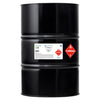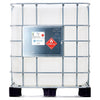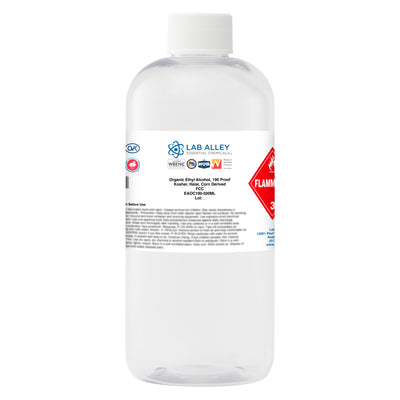Food Grade Ethanol, 200 Proof, Kosher, Halal


Commonly used in food research and development, including food grade extraction and fraction isolation, or food grade synthesis.
Business Support
Description
About Food Grade Ethanol, 200 Proof, Kosher, Halal
Pure, sometimes called “absolute” ethanol, is 100% ethanol. Absolute food grade ethanol is preferred for many common techniques in food research and development, including food grade extraction and fraction isolation, or food grade synthesis.
For food grade synthesis, the presence of water could result in undesired byproducts. For example, many volatile organic compounds are synthesized in ethanol, and can be added to food to manipulate flavor and aroma. The use of food grade solvents in all of these applications ensures the safety and purity of food and food standards for consumers.
Buy Food Grade Ethanol 200 Proof 100% Pure Alcohol In Bulk Sizes, Non-Denatured Ethyl Alcohol Products For Sale, Packaged In Bottles, Drums, Totes, Pallets.
PRODUCT VIDEOS
WHY BUY FROM LAB ALLEY
- Competitive pricing and well-stocked US-based inventory.
- Fast 1-2 business days shipping, including hazmat transport.
- Exceptional customer service and chemical technical support.
- Delivery on budget, on time, every time.
PRODUCT INFORMATION
Customer Reviews and Q&A
Safety and Shipping
GRAS Reference Citation 21 CFR 184.1293.
Pure 200 proof ethanol is hazardous. Hazmat fee required. DOT: Ethanol (undenatured ethanol), 3, UN1970, PG II).
You can buy food grade 200 proof ethanol in a pint or pallets. For bulk orders, please call Lab Alley customer service, 512-668-9918 or email us at, customercare@laballey.com. We ship within 1-2 business days in the US and Canada.
Business Support
Built for Business.
At Lab Alley, we simplify procurement with custom quotes, credit applications, tax exemptions, and fulfillment support, ensuring on-budget, on-time delivery - your success is our priority.
Apply for Credit
A Lab Alley credit account streamlines purchasing for your business. Our Customer Success Team is available to help you through every step of the process.
Request a Custom Quote
Get a fast, customized quote tailored to your specific needs. Our team ensures accurate pricing and availability to help streamline your purchasing process.

Additional Business Resources
Lab Alley provides access to essential certifications, documents, and other resources to support your business.
Product Manuals
Certificates of Analysis

Create a Lab Alley Account

RECEIVE exclusive offers, promotions, and discounts on chemicals.

Always have the product you need, when you need it with our AUTOSHIP program.





































